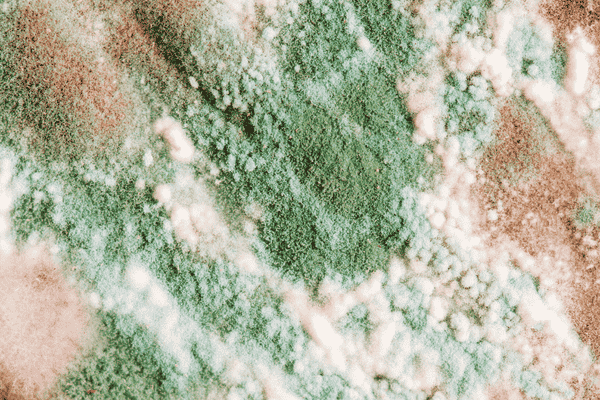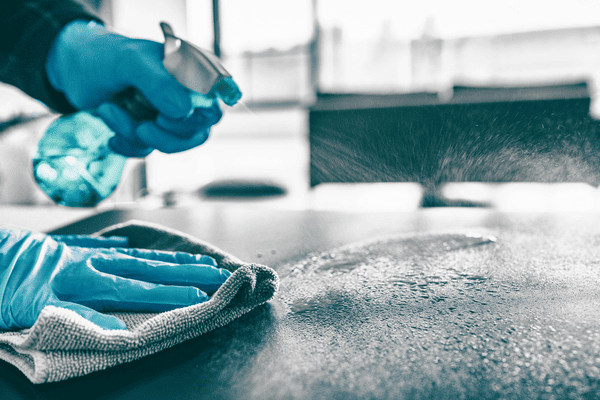What can mold grow on?
Mold is one of those household headaches that seems unavoidable, especially in humid or damp environments. But did you know that mold can grow on far more surfaces than you might expect? Many homeowners believe mold is only a concern for bathrooms and food, but the truth is, it can thrive in a variety of surprising places—some of which you may never have considered.
From carpets and furniture to even plastic and glass surfaces, mold finds a way to settle in and spread. In this guide, we’ll break down the science behind mold growth, highlight unexpected places where mold can take hold, and share expert advice on how to prevent it.
Let’s dive in and explore exactly what can mold grow on—you might be in for a surprise!
The Science Behind Mold: Why It Grows Where It Does

Mold is a type of fungus that thrives in specific conditions. All it needs is:
- Moisture – This can come from leaks, high humidity, or condensation.
- Warmth – Mold grows best in temperatures between 60-80°F (but can survive in colder conditions).
- Oxygen – Mold doesn’t need light to grow, but it requires oxygen.
- An Organic Food Source – This includes materials like wood, paper, dust, and even fabric fibers.
Many people assume mold only grows in visible, wet areas, like bathroom tiles or damp basements. However, mold spores are microscopic and can settle in hidden places, lying dormant until conditions allow them to flourish.
This is why regular mold inspections and moisture control are critical to keeping your home mold-free.
Can Mold Grow On These Common Household Surfaces?
You may know that mold loves damp drywall and musty old carpets, but what about plastic, glass, or metal? Here’s a closer look at where mold can actually grow.
Walls and Ceilings
Yes! Mold frequently grows on drywall, wallpaper, and ceilings due to moisture buildup from poor ventilation, leaks, or high humidity. If you’ve noticed peeling paint, bubbling wallpaper, or musty odors, mold could be growing underneath.
Wooden Furniture and Floors
Wood is highly porous, meaning it absorbs moisture easily. If spills aren’t cleaned properly, or if humidity levels stay high, mold can develop on:
- Hardwood floors
- Cabinets
- Tables and chairs
- Shelving and wooden decorations
Carpets and Upholstery
Have you ever spilled something on your carpet and thought blotting with a towel was enough? Unfortunately, if moisture seeps deep enough, it creates a perfect mold breeding ground. This applies to:
- Carpets and rugs
- Couches and cushions
- Mattresses and bedding
Damp fabric traps moisture, and mold can grow within 24-48 hours if left unchecked.
Clothing, Shoes, and Leather Goods
If you’ve ever found mold on an old pair of stored shoes or a sweater tucked away in the back of your closet, it’s because tight, dark spaces with limited airflow create an ideal mold environment.
To prevent mold growth on fabric:
- Ensure clothing is completely dry before storing
- Use silica gel packets in storage bins
- Avoid leaving damp towels or laundry sitting out
Paper and Books
This one shocks a lot of people—yes, mold can grow on books and paper! If your books have been stored in a damp basement, attic, or garage, they could be harboring mold spores.
Signs of mold on paper include:
- Yellowing pages with dark spots
- Warped or wavy paper
- A distinct musty odor
Plastic, Metal, and Glass
Technically, mold doesn’t feed on non-organic materials like plastic, metal, or glass. However, it can still grow on these surfaces if there’s an accumulation of:
- Dust
- Grease
- Soap scum
- Organic residues (like food particles)
Regular cleaning and drying prevent mold from developing on these surfaces.
HVAC Systems and Air Ducts
One of the sneakiest places for mold growth is inside your home’s HVAC system. If mold develops here, it can:
- Distribute spores throughout your home
- Create persistent air quality issues
- Trigger allergies and respiratory problems
Regular air duct cleaning and filter replacement can help keep your air mold-free.
Unexpected Places Mold Can Grow (And How to Prevent It!)
Kitchen Appliances
- Coffee makers, refrigerators, and dishwashers provide dark, damp environments perfect for mold.
- Solution: Regularly clean and dry these appliances after use.
Houseplants and Soil
- Overwatering plants can lead to mold in the soil or on leaves.
- Solution: Allow soil to dry between waterings and increase air circulation.
Shower Curtains and Bath Mats
- These surfaces are constantly wet, leading to mold buildup.
- Solution: Wash shower curtains and bath mats frequently and allow them to dry completely.
Stored Items in Basements and Attics
- Cardboard boxes, old clothes, and forgotten decorations are prime targets for mold.
- Solution: Store items in plastic bins with tight-fitting lids and use a dehumidifier.
How to Prevent Mold Growth on Household Surfaces
Now that we’ve covered where mold can grow, let’s talk about how to prevent it!
Proper Ventilation and Humidity Control
- Keep humidity levels below 50% using dehumidifiers and air conditioning.
- Use exhaust fans in bathrooms and kitchens to improve air circulation.
- Open windows when possible to increase airflow.
Cleaning Tips for Different Surfaces
- Walls and ceilings: Wipe down with a mold-killing solution, like vinegar or hydrogen peroxide.
- Furniture and wood surfaces: Keep dry, and use a moisture-resistant finish.
- Carpets and upholstery: Steam clean periodically and dry thoroughly after spills.
- Closet storage: Use moisture absorbers and avoid storing damp items.
When to Seek Professional Help
If you suspect mold is growing inside walls, HVAC systems, or hidden areas, a professional mold inspection can provide peace of mind. Experts like Howard Environmental offer:
- Thorough mold testing and assessments
- Unbiased, professional recommendations
- Solutions for maintaining a mold-free home
Final Thoughts: Protecting Your Home from Mold’s Hidden Threats
Mold can grow in more places than most people realize. From walls and floors to kitchen appliances and books, preventing mold requires regular maintenance, moisture control, and early detection.
By staying vigilant, improving ventilation, and keeping your home dry, you can prevent mold before it becomes a costly problem.
If you’re dealing with a persistent mold problem or want to ensure your home is mold-free, consider scheduling a mold inspection with Howard Environmental. With impartial assessments and expert guidance, they help homeowners take control of their indoor air quality.
Don’t wait—schedule your mold inspection today and protect your home from hidden mold threats!

